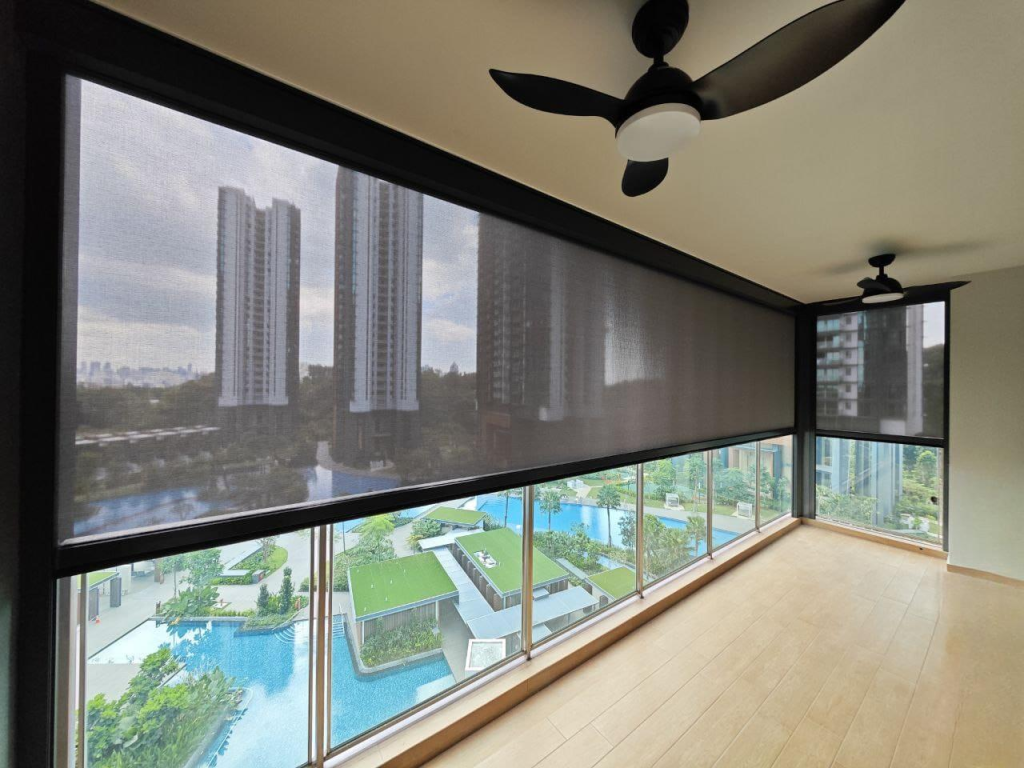
The proliferation of Zip Track Singapore systems has fundamentally altered the relationship between indoor and outdoor living across the island nation. As urban density increases and private space becomes increasingly precious, Singaporeans have turned to innovative architectural solutions that maximise the functionality of every square metre. This transformation represents not merely a design trend but a profound shift in how residents conceptualise their living environments.
The Climate Imperative
Singapore’s equatorial position creates a demanding environment where daily temperatures routinely exceed 30°C, accompanied by punishing humidity and sudden torrential downpours. This climatic reality has long challenged architects and homeowners alike, pushing them toward solutions that offer both protection and flexibility.
“The Singapore climate demands systems that can transition seamlessly between providing shade and allowing airflow, whilst simultaneously offering protection from our notorious thunderstorms,” explains a veteran architect with three decades of experience designing for tropical environments.
The traditional approach of fixed barriers has given way to more sophisticated systems that respond to these dynamic conditions without compromising on either functionality or aesthetics.
Engineering Excellence in Simplicity
What distinguishes zip systems from conventional blinds and screens is their remarkable engineering simplicity. The fundamental innovation lies in the track-and-zip mechanism that:
· Creates a complete seal against insects and rain
· Resists wind forces that would destroy conventional screens
· Operates smoothly with minimal maintenance requirements
· Allows for expansive coverage without sagging or distortion
This engineering approach represents a significant departure from earlier systems that relied on tension alone to maintain stability. The interlocking channel design ensures that the fabric remains firmly secured even under substantial environmental pressure.
Material Science Advancements
The evolution of materials science has played a crucial role in the effectiveness of modern zip systems. Today’s installations utilise:
· PVC-coated mesh fabrics that block up to 95% of UV radiation whilst maintaining visibility
· Reinforced edge welding techniques that prevent deterioration at stress points
· Corrosion-resistant aluminium channels engineered specifically for tropical coastal environments
· Motorisation components sealed against humidity and salt exposure
“Singapore’s combination of solar intensity, humidity, and occasional salt spray creates a perfect storm for material degradation. The latest generation of fabrics and components have been specifically engineered to withstand these conditions,” notes a materials specialist consulted for this article.
This material evolution has extended the typical lifespan of installations from 3-5 years to 10-15 years, dramatically improving the return on investment calculation for property owners.
Architectural Integration
The aesthetic impact of these systems extends beyond mere functionality. Architects have embraced zip systems as design elements that:
· Preserve clean architectural lines when retracted
· Create dynamic façades that change throughout the day
· Allow for customisation through fabric selection and housing design
· Eliminate the visual clutter of traditional blinds and curtains
Leading architectural firms have incorporated these systems into projects ranging from luxury condominiums to public institutions, recognising their ability to enhance rather than compromise design vision.
Economic Considerations
The financial calculation behind Zip Track installations reveals compelling advantages beyond immediate comfort:
· Reduced air conditioning costs, typically 20-30% for adjacent spaces
· Extended lifespan of interior furnishings protected from UV exposure
· Increased usable square footage of properties
· Enhanced property values through improved functionality
The initial investment, whilst higher than basic shade solutions, typically achieves return through energy savings within 3-4 years in residential applications and even faster in commercial settings.
Environmental Impact
The environmental benefits extend beyond energy savings. By reducing solar heat gain before it enters the building envelope, these systems fundamentally alter the cooling equation. This passive approach aligns with Singapore’s Green Plan 2030 objectives by:
· Decreasing peak electricity demand during critical afternoon hours
· Reducing overall carbon emissions from power generation
· Minimising the urban heat island effect
· Creating more comfortable outdoor spaces that reduce air conditioning dependence
The Social Dimension
Perhaps the most profound impact has been on how Singaporeans use their spaces. Balconies and terraces once rendered unusable by sun and rain have been transformed into functional extensions of living areas. This transformation carries particular significance in a city where outdoor space comes at an extraordinary premium.
“What we’re witnessing is a redefinition of the indoor-outdoor boundary in Singapore architecture,” observes a prominent urban sociologist. “These systems have effectively created thousands of square metres of newly usable space across the city.”
This functional expansion has particular relevance in public housing developments, where maximising limited space delivers significant quality-of-life improvements.
Future Trajectory
The evolution continues with integrated systems that combine:
· Smart home connectivity for automated operation based on weather conditions
· Integrated LED lighting elements for evening use
· Solar-powered operation reducing dependency on electrical connections
· Enhanced fabrics with improved thermal and acoustic properties
These advancements suggest that the technology will continue to evolve in response to Singapore’s unique environmental challenges and space constraints.
Conclusion
The quiet transformation of Singapore’s architectural landscape through zip systems represents a particularly Singaporean approach to problem-solving: pragmatic, technologically sophisticated, and aesthetically considered. As urban density increases and climate challenges intensify, the intelligent management of the boundary between interior and exterior spaces becomes increasingly critical to maintaining quality of life.
For homeowners and property developers alike, these systems offer compelling advantages in functionality, durability, and aesthetic integration. As awareness grows and technology advances, we can expect the continued expansion of Zip Blinds across Singapore’s evolving urban landscape.
